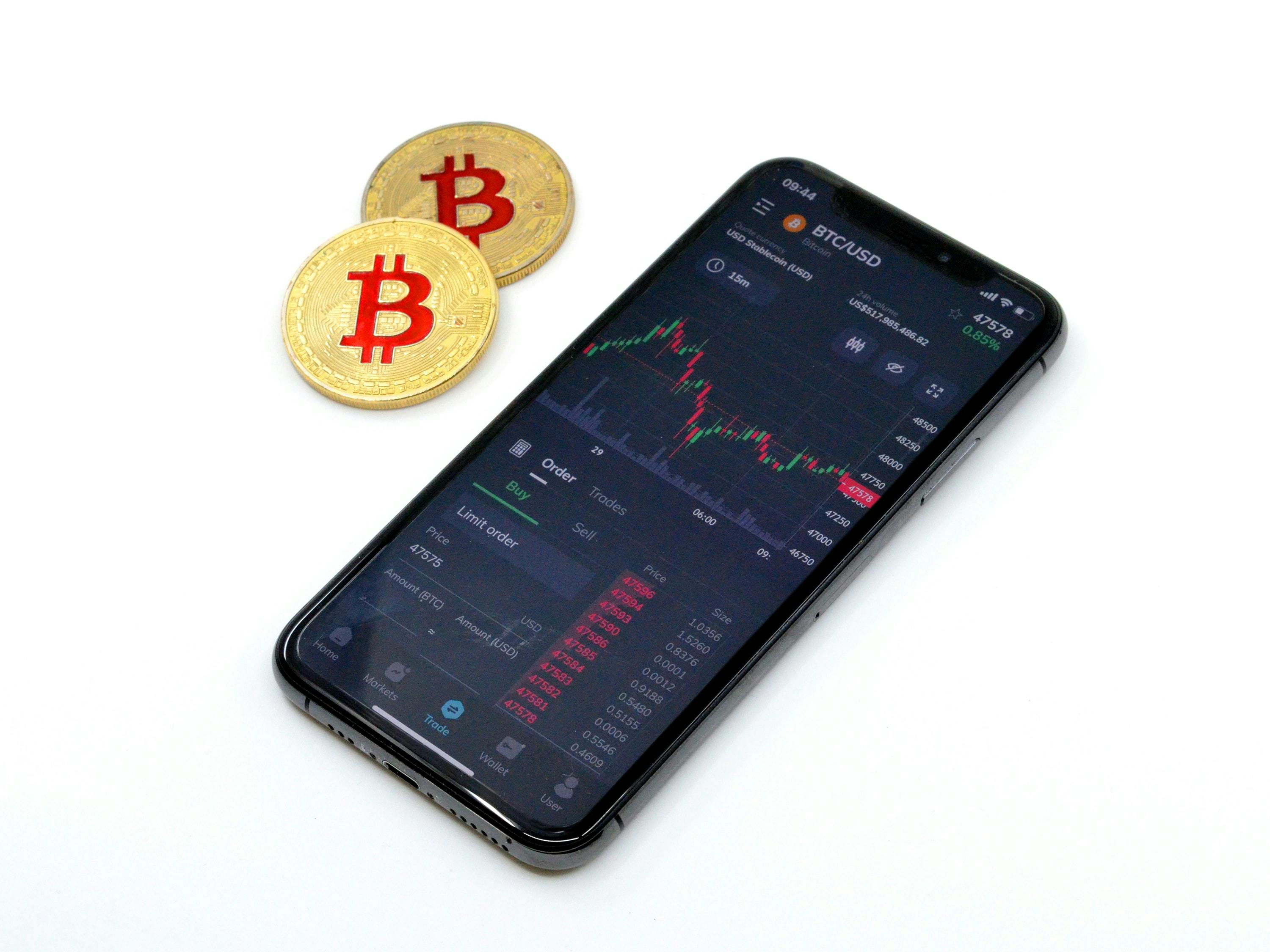A Beginner's Guide To Getting Into Web 3.0
The Different Fields You Can Play In
Table of contents
So, you have heard so much about web 3.0. You wonder what exactly it is about. What is the hype about anyway? You decide to do some research; now you know that web 3.0 is an iteration of the world wide web, a step forward from web 2.0. But you are left wondering how you can get involved.
The web 3.0 enthusiasts and experts are going crazy about the advent of a new internet. They freely throw around terms like blockchain, NFTs, metaverse and so on.
You are left wondering where exactly you need to start. I mean, you love the buzz, don’t you? You want to play with the big boys in the web 3.0 world but you don’t know how.
Well, it’s a good thing you are reading this article because your questions are about to be answered. Ride with me.
What Exactly Is Web 3.0?
 Photo by Shubham Dhage on Unsplash
Photo by Shubham Dhage on Unsplash
Web 3.0, a.k.a. the decentralised web is simply a new iteration of the web/internet which builds upon some of the shortcomings of web 2.0 and tries to make them better.
The key focus areas of web 3.0 include decentralization, openness and ownership of data. It aims to achieve these using technologies like blockchain, artificial intelligence & machine learning, and tokenization of digital assets and more.
These technologies enable us to enjoy a freer and more immersive internet experience without fear of data misappropriation.
With web 3.0, you can own your content and even transfer ownership via tokens. Digital identity, voting and finance are just a few of the fields that web 3.0 would revolutionize. Check out this article to learn more about the concept of web 3.0.
This article aims to explore the areas one can get involved in as a beginner in web 3.0.
The Pillars Of Web 3.0
There are some terminologies that have become so commonplace that they are almost synonymous with the term web 3.0 itself. I like to refer to them as the pillars (niches, if you will) of the web 3.0 ecosystem.
As a new entrant into the buzz that is web 3.0, you may have heard about a few of them. And you would most likely pick one to specialize in eventually. The purpose of this article is to introduce you to a few of the different fields you may decide to play in web 3.0. Let’s get into it:
1. Blockchain: The blockchain is basically a database. A decentralized, distributed and immutable public database/ledger. It stores records of transactions on different computers (nodes) across the internet; with each node bearing the same information as the next.
The transactions are recorded in ‘blocks’ and each new block contains a hash(identity) of the previous one. This confers immutability on it because you cannot change one block without changing the previous one, and the previous one, and so on.
This linking of the blocks forms a chain of blocks (of transactions) which we now call the blockchain. The blockchain technology is what cryptocurrencies are built on.
a. Cryptocurrencies: Cryptocurrencies are digital currencies that can be used as payment for goods and services. They are built on a blockchain and mostly exist as coins or as tokens.
 Photo by Mediamodifier on Unsplash
Photo by Mediamodifier on Unsplash
Apart from using them as a means of payment, they can also be traded on exchanges and stored in wallets. You can either buy and store them in your wallet or trade them in the form of futures contracts.
Cryptocurrencies are usually traded against each other (e.g. BTC/USDT). For instance, you would spend USDT to purchase BTC. They can also be bought using credit cards (depending on your location) or via peer-to-peer transactions, which is essentially the backbone of web 3.0.
b. Non-Fungible Tokens (NFTs): NFTs are one-of-a-kind digital assets or collectibles which like cryptocurrencies are existent on a blockchain.
The most commonly known forms of NFTs are digital artworks or pictures. But these are not the only things that can be tokenized. Some other examples are concert tickets, documents and even domain names.
No two NFTs can be completely the same, even if they are in the same collection (in the case of digital art). This is because any given NFT is non-fungible, otherwise referred to as unique.
A $100 bill is worth exactly the same as every other $100 bill that exists because it is fungible. You can exchange your $100 with your friend’s $100 and you both still have the same amount (value) you had initially. But you cannot swap an NFT with another and still retain the same value
NFTs are essentially a store of value and can be considered to be a good investment choice.
c. Decentralized Finance (DeFi): With decentralized finance, you can easily access most of the services you would require of traditional banks. DeFi makes use of blockchain and cryptocurrency technologies to make financial transactions easier for you.
With DeFi, the middlemen (banks) are eliminated and you are able to bank for yourself via peer-to-peer systems. From savings, to lending and borrowing, and other services offered by banks, DeFi empowers you to access these services yourself and get better returns.
2. Blockchain development: Blockchain/web 3.0 development is one of the most lucrative niches in web 3.0. With blockchain developers earning as much as $150,000 per year, and being yet so few in the space, this might be a job role worth considering.
A blockchain developer is one that builds blockchain based technologies; ranging from smart contracts and decentralized applications (dApps) to core blockchains.
To become a blockchain developer, you need some prior knowledge of programming fundamentals. At least a good knowledge of JavaScript (or any other programming language) is required before getting into programming for the blockchain.
A good place to begin as a new entrant to the space would be to learn the basics of web development in order to learn the fundamentals of programming.
3. Gaming: This is another aspect of web 3.0 that generates a lot of interest, and it is not hard to see why. Gaming often involves technologies such as virtual and artificial realities which provides a generally very immersive experience.
 Photo by Fredrick Tendong on Unsplash
Photo by Fredrick Tendong on Unsplash
Gaming in web 3.0 allows players to purchase and own avatars and other in-game collectibles in form of NFTs which can be paid for with cryptocurrencies. With the advent of play-to-earn (P2E) games, players can earn and trade in-game assets as NFTs to make money. A good example is the Axie Infinity game.
Over time, other games have been developed and the idea of gaming in web 3.0 has grown to become a rather lucrative venture. If you are a gamer, this might be a good niche for you to make money while doing what you love.
4. Metaverse: The metaverse is an idea of a new iteration of the internet as we have it. It is a virtual world in which we would exist in and be able to interact using avatars which represent us.
Represented by your avatar in the metaverse you can shop, attend shows, visit new cities and attend meetings, all from the comfort of your home.
The metaverse relies heavily on virtual reality (VR) and augmented reality (AR) technologies powered by machine learning (ML) and artificial intelligence (AI).
The metaverse, though still a futuristic ideal, when it arrives is going to be one of the key areas of web 3.0. Check out this blog for more on the metaverse.
5. Community development and promotion: The web 3.0 ecosystem is largely dependent on communities to thrive. This can be alluded to its peer-to-peer systems and decentralized nature.
Most web 3.0 companies are actively on the look out for individuals who are experienced in community development and community management, to join their team and build a community for the brand.
 Photo by Product School on Unsplash
Photo by Product School on Unsplash
It is the duty of the community manager to build and maintain a community around a specific idea or product. They also have to ensure that the community is kept active and thriving always.
Some of the skills required of a community manager include: good communication skills; interpersonal and customer service skills; organizational and project management skills etc.
6. Media: The media is always evolving and as it concerns web 3.0, the blockchain can play a big role in the media and entertainment industry.
The blockchain can store information about trademarks and intellectual property rights. This can largely reduce the rampant cases of plagiarism and copyright infringement.
The time-stamped, append-only nature of the blockchain allows for a content owner to upload their work on the blockchain knowing that it is securely stored and recognized as belonging to them.
If any issues of confirming ownership of content arise, it can always be traced back to its original source. All nodes can unanimously establish the origin of a piece of work by going through the records on the blockchain.
Conclusion
Although the web 3.0 ecosystem is still relatively new, there are several ways to get involved and these ones listed above are just a few of them. However, it is important that you do further research on these topics and more, as this article is by no means exhaustive.
As the saying goes, DYOR (Do Your Own Research)
Check out these articles for further reading:
So that’s all from me for now! I hope reading this has given you some ideas on how to get involved in the web 3.0 ecosystem. Feel free to drop your thoughts below.

 Photo by
Photo by